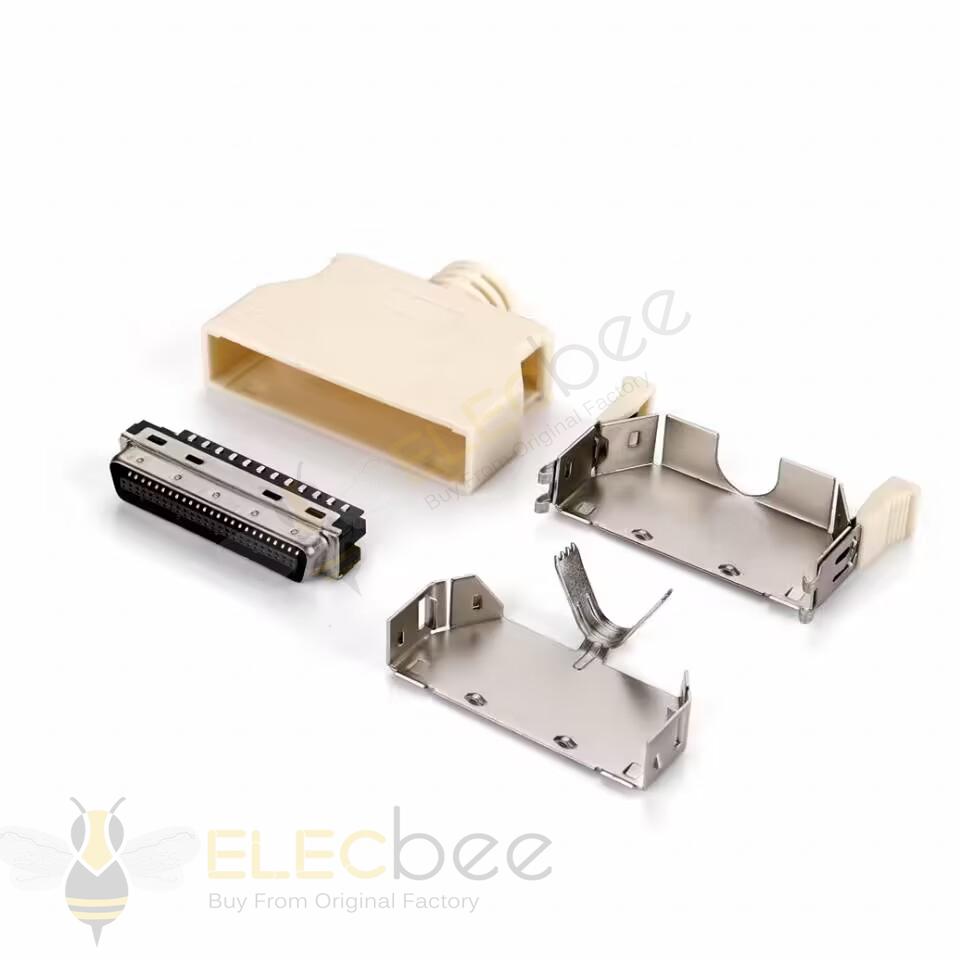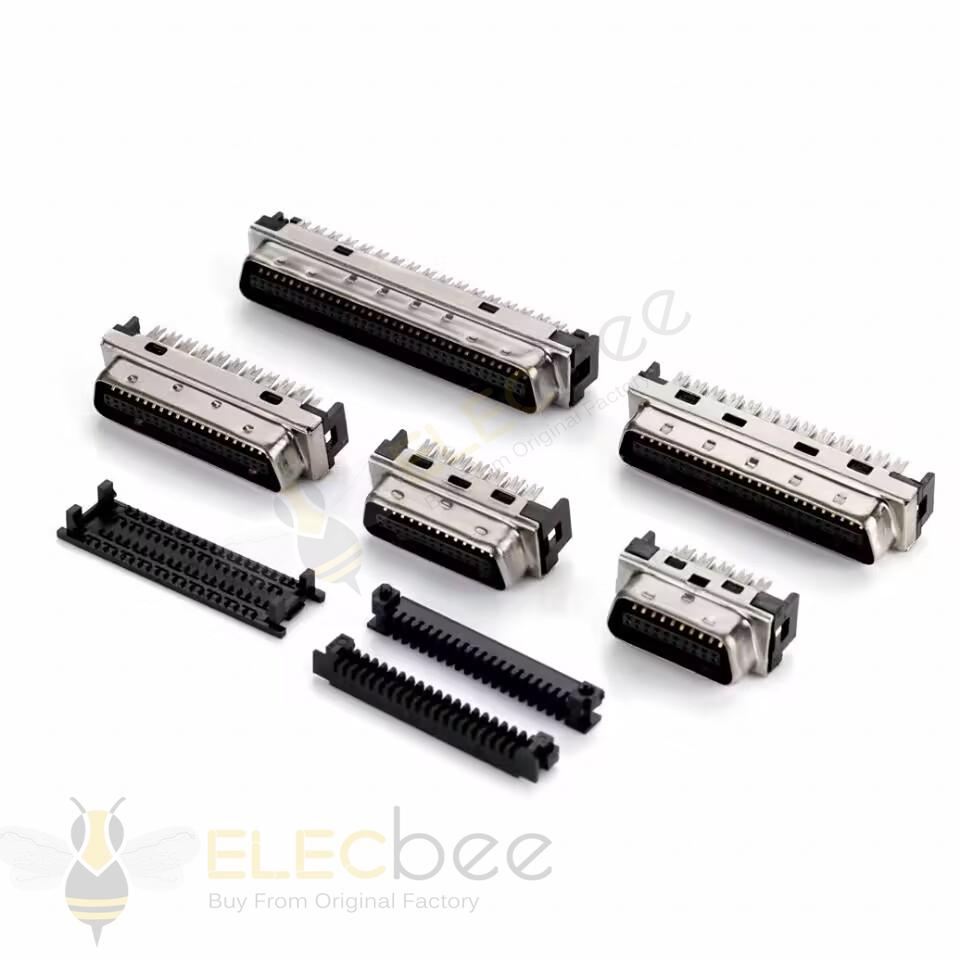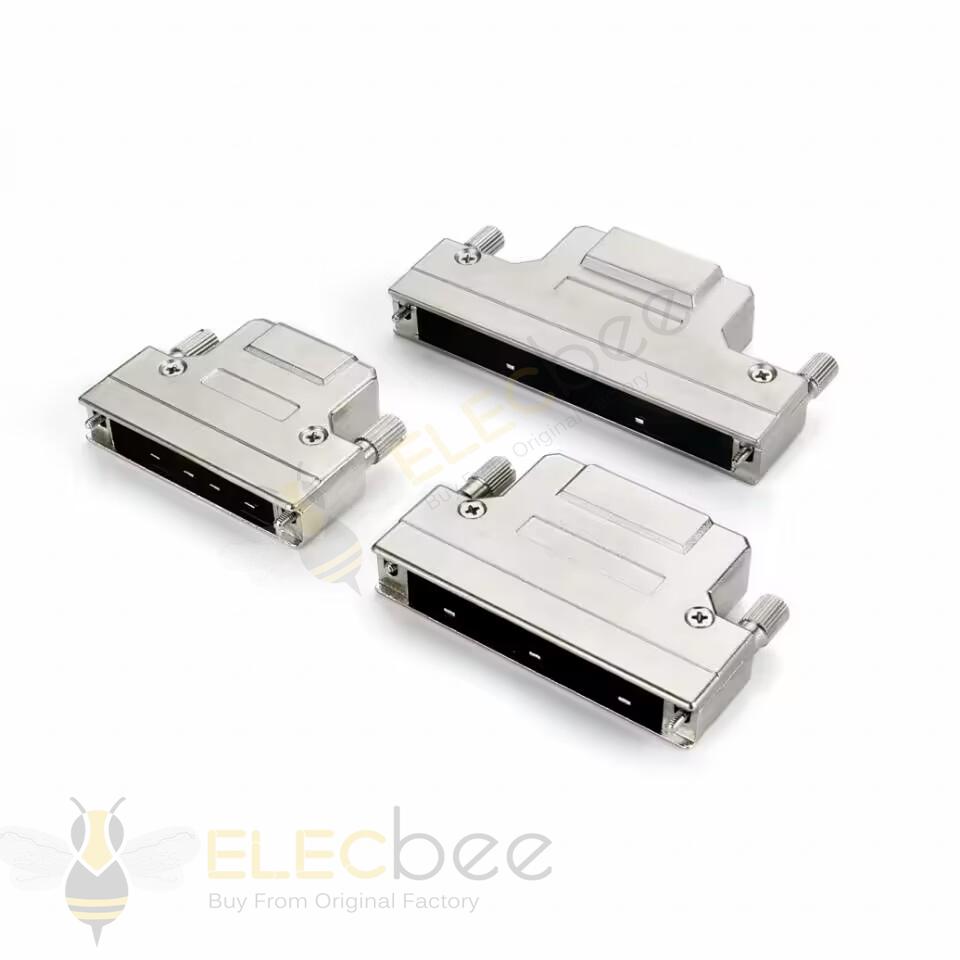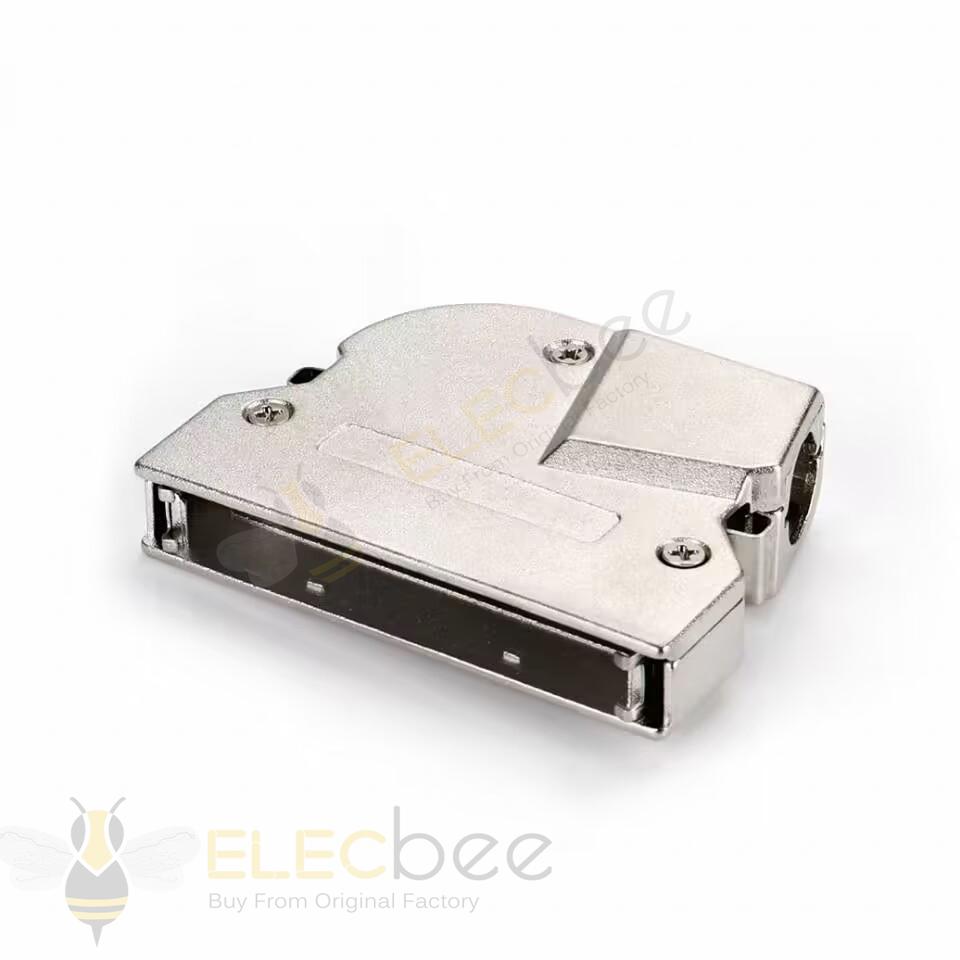At present, there are five major types of interfaces for storage devices: IDE, SCSI, USB, parallel port, and serial port, among which IDE, USB, and SCSI connectors are the key points. Compared with the D-sub connector, everyone is relatively unfamiliar with the SCSI connector, but SCSI is also a very common storage device interface in electronic equipment and industrial equipment.
IDE (Integrated Drive Electronics, electronic integrated drive) is welcomed by ordinary users due to its high-speed transmission and normal price, and the usb interface developed to the current Type C series is also deeply loved by the digital market.
As for SCSI (Small Computer System Interface, small computer system interface), the speed, performance and stability are better than IDE, and it is widely used in servers, industrial control equipment, and workstations, and the market has a promising future.

Concept
SCSI, the whole Small Computer System Interface.
SCSI is an interface that connects hosts and peripheral devices, and supports a variety of devices including disk drives, tape drives, optical drives, scanners, servers and workstations, and industrial control equipment. At present, the main customer groups of SCSI connectors produced by Adam are customers in the industrial control industry, which is also a large group of SCSI applications. In terms of speed, performance, and stability, it is better than the IDE interface, but the price is indeed more expensive. SCSI is a real bus that defines standard physical and electrical connections for devices, so the application of SCSI makes the application of various peripheral devices more convenient. For example, the SCSI controller can perform data operations, which is equivalent to a small CPU and has its own command set and cache. Not only that, the SCSI connector can perform dynamic division of labor on multiple devices of the computer, properly allocate and dynamically complete multiple tasks required by the system.
Develop
Some people say that the development speed of SCSI connectors in the past few years is not as fast as that of IDE. In fact, this is not the case, but the contact with SCSI connectors is relatively small, and the understanding is not so thorough. The SCSI standard has been implemented since 1980, but it is named by many manufacturers and varies from country to country, so it is easy to cause confusion.
The development of SCSI connectors has been the sixth generation technology, from SCSI (8bit), Wide SCSI (8bit), Ultra Wide SCSI (8bit/16bit), Ultra Wide SCSI 2 (16bit), Ultra 160 SCSI (16bit) to Today's Ultra 320 SCSI has a qualitative leap from 1.2MB/s to the current 320MB/s. The current mainstream SCSI hard drives all use the Ultra 320 SCSI interface, which can provide an interface transmission speed of 320MB/s.

Types of
To understand SCSI, you must first understand its type. The following is the standard classification of STA (SCSI Trade Association, SCSI Trade Association).
SCSI Type Notes:
(1) Bus length for point-to-point transmission
(2) SCSI, Ultra SCSI or Ultra2 SCSI are optional
(3) LVD (Low Voltage Differential) does not define its speed, and it can maintain a normal transmission rate within 12 meters. If a device in the bus is set to single-termination, the entire bus will also switch to single-termination.
(4) A single terminal does not define its length
(5) HVD (High Voltage Differential) does not define its speed
(6) After Ultra2, all high-speed transmissions are based on wideband (Wide) mode.

Here is an explanation of some standard terms to help you understand what the above means:
Single Ended: Many legacy devices are single ended and they are limited to the 6 meter length of the SCSI-1 protocol. Note: This distance includes the distance of the cables inside the device.
Differential: The distance over which the SCSI bus and devices can be transmitted along a long, additional line with a maximum length of 25 meters. The disadvantage is that it is not compatible with single-terminated devices. Fast SCSI: Increase the speed of the first-generation SCSI bus from 5MHz to 10MHz, and double the theoretical data transfer rate to 10MB/sec.
Ultra SCSI: Increase the speed of the first-generation SCSI bus from 5MHz to 20MHz, and double the theoretical data transfer rate to 20MB/sec.
Wide SCSI: It relies on a second data cable or 68-pin data line to increase the performance of the bus. The data bit width is 16 or 32 bits, which doubles or quadruples the performance of traditional SCSI.
Wide Ultra SCSI: Increases bus performance to 40MB/sec with 68-pin data cables.

SCSI specification version
The relevant specifications of SCSI:
SCSI-1
SCSI 1 is the original specification in 1986, the first SCSI standard. The bus width is 8 bits, allowing up to 7 devices to be connected, and the maximum transmission speed is 5MB per second, which was of epoch-making significance at the time.
Defines the physical interfaces, transfer protocols, and standard instruction sets for hard disks, tapes, and other storage devices.
SCSI-2
SCSI 2, also known as Fast SCSI (Fast SCSI), has made many improvements on the basis of SCSI 1, but it was not widely used until 1994.
Increased speed and bus width, increased the transmission speed to 10MB per second, increased reliability, supported multi-threaded instructions, and added more storage device type instruction sets. the
Fast Wide SCSI
Fast Wide SCSI is a type of SCSI 2. The bus width is doubled to become a 16-bit bus, and the transmission speed is increased to 20 MB per second. One controller can connect 14 devices.
Ultra SCSI
Ultra SCSI is also a type of SCSI 2, using the original 8-bit bus, but the maximum transmission speed is 20MB per second, and the number of devices that can be connected to a single controller is still 7.
Ultra Wide SCSI
Ultra Wide SCSI is called Wide Ultra SCSI. Like Fast Wide SCSI, it uses a 16-bit bus with a maximum transmission speed of 40 MB per second. One controller can connect 14 devices.
Ultra 2 SCSI
Ultra 2 SCSI uses an 8-bit bus, but the internal clock speed is doubled, the maximum transmission speed reaches 40 MB per second, and the number of devices that can be connected to a single controller is still 7.
Wide Ultra 2 SCSI
Wide Ultra 2 SCSI was the fastest SCSI for a while, using a 16-bit bus, with a maximum transfer speed of 80MB per second, doubled the internal clock speed, and a controller that could connect 7 devices.
Ultra 3 SCSI
1995 ANSI standard, and contains a series of small standards.
Ultra 3 SCSI, also known as SCSI 160, is an extremely fast SCSI standard. The maximum transmission speed of the controller using the 32 bit PCI slot is 80 MB per second, and the maximum transmission speed of the controller using the 64 bit PCI slot is 160 MB per second, and one controller can connect 14 devices.
Defines the physical interface, transport protocol, and SCSI instruction set layering.
SCSI 3 has gradually lowered the price, and it will be the best choice for 24bit/96KHz recording hard drives.
Ultra 320 SCSI
Ultra 320 SCSI is a new SCSI standard that has just begun to be used. Ultra SCSI 320 allows a maximum transfer speed of 160 MB per second using a 32 bit PCI slot, and a maximum transfer speed of 320 MB per second using a controller using a 64 bit PCI slot. SCSI320 uses a 16 bit bus, compatible with SCSI 160.
At present, there are two main hard disk interface technologies used in servers, SATA and SCSI. Products using SAS hard disks are also on the market. Of course, there are also high-end fiber optic hard disks, of which the first two are the most common.

Advantage
Take stock of the advantages of SCSI connectors. SCSI has the advantages of low CPU usage, high efficiency of multi-task concurrent operations, many connected devices, and long connection distance. For most server applications, it is recommended to use SCSI hard disks, and use the latest Ultra320 SCSI controller;
SATA hard drives also have hot-swappable capabilities, and can have good scalability on the interface, such as using SCSI-SATA, FC-SATA conversion interfaces, and SATA port multipliers (Port Multiplier) in rack servers. , making it more flexible than SCSI.
For low-end small server applications, the latest SATA hard drives and controllers can be used. Like Microchannel, VME, and NuBu, SCSI is a true bus that defines a standard physical and electrical connection for devices. The principal difference between SCSI and other buses is that SCSI facilitates the use of a wide variety of peripheral devices. Its communication protocol regards peripheral devices as logical devices using a set of prescribed command sets, thus eliminating hardware incompatibilities.
The SCSI specification lists commands for many types of devices. These devices are: hard disk (random access), magnetic tape (sequential access), printer, etc. The specification includes mandatory orders, operating orders and orders set by each seller.
The SCSI bus regards a hard disk as a random access device with a specified capacity that can respond to standard format, read, and write commands. The actual hardware might be a hard drive using MFM, RLL, ESDI, or some kind of proprietary interface. A built-in SCSI controller translates commands into control signals for a dedicated interface.
In addition, SCSI takes the physical bus beyond the chassis of a typical microcomputer. The SCSI bus can be extended up to 6 meters over the cable using single-ended drivers and up to 25 meters using differential drivers. This solves the problem of requiring every kind of peripheral equipment to be placed in the computer box, and also enables large peripheral equipment such as image scanners to be connected. This type of equipment often cannot be placed anywhere at will. The connectivity and economy of the hardware provides the user with a great deal of ability to use the required I/O requirements. SCSI's standard connector can easily connect multiple peripheral devices, and its standard command set simplifies the selection of SCSI peripheral devices for system owners, while ensuring compatibility. SCSI's versatility has made it a standard in most companies' system-level and external storage products. It's a meaningful thing.

Elecbee is a company specializing in the research and development, production and sales of electronic connectors, adapters and antennas. Whether it is technology, research and development, production or business, it is in the leading position in the industry. If you want to know more about our products or need related help and support, you can directly communicate with our technical staff in real time on the website or send an email to service@elecbee.com. All Elecbee staff look forward to cooperating with you.

